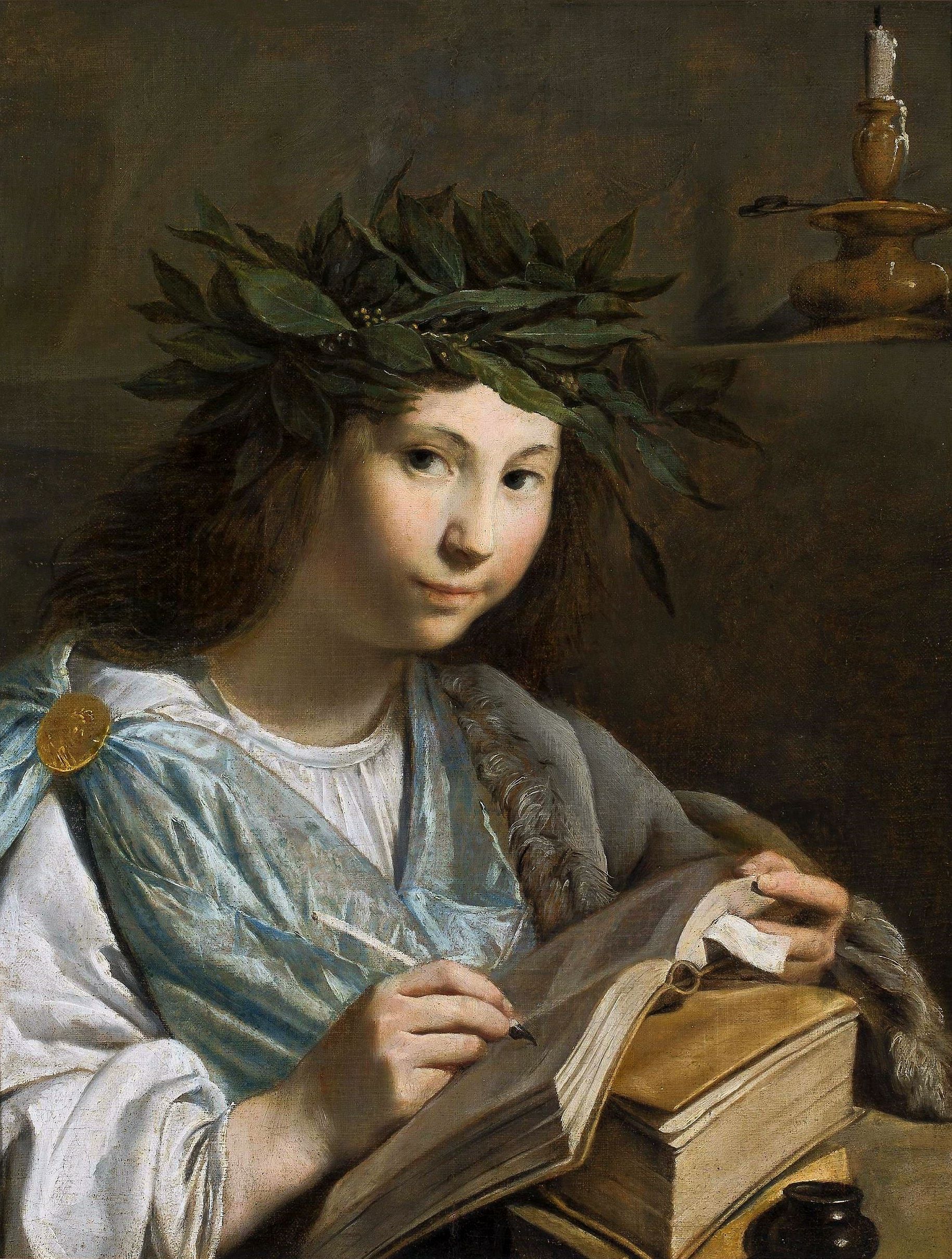Endless Forms Most Beautiful: Cosplay
An exploration of cosplay: what it is, why people do it, what goes into it, and more. Features interviews with several cosplayers and a professor on the subject.
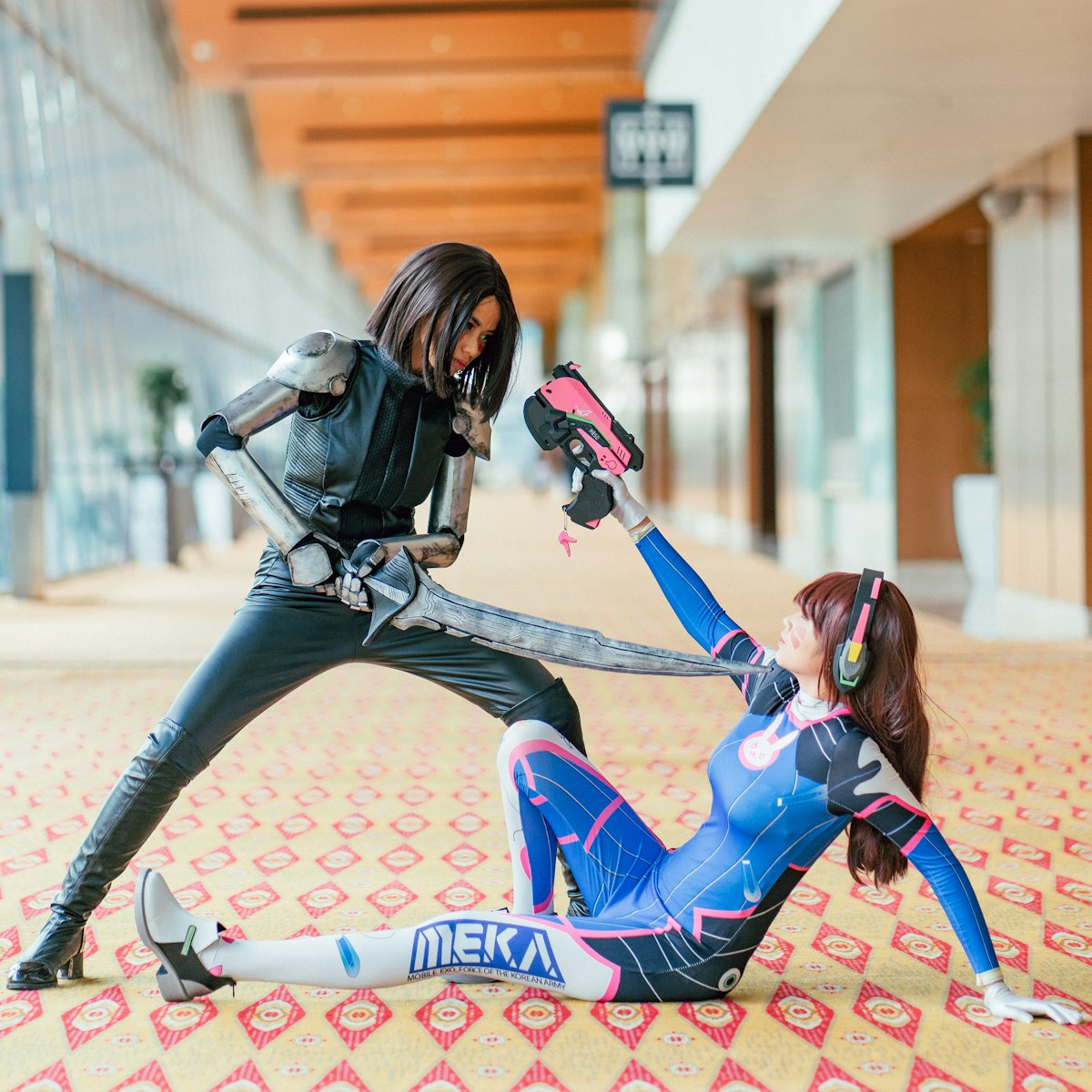
What is Cosplay?
Broadly defined, cosplay is the act of performing as a character from any source of media – film, television, anime, manga, literature, comic books, video games, etc. Popular examples include comic book characters like Harley Quinn, Batman, Black Cat, Superman, Wonder Woman, Spiderman, and Poison Ivy; literary figures such as Harry Potter, Count Dracula, characters from Jane Austen's works; anime characters such as Ash Ketchum, Goku, Monkey D. Luffy, and Yoko Littner; or personifications of Death, the Seasons, or other abstract concepts. What's popular is trendy and changes seasonally; there are probably only a few mainstays.
The term cosplay is a portmanteau of the words costume and play. It was first coined in the June 1983 issue of My Anime by Nobuyuki Takahashi as kosupure (itself a portmanteau of kosuchuumu purei) after visiting Comiket, an event attended by more than half a million people biannually in Japan (it's portmanteaus all the way down; Comiket is a portmanteau of Comic Market). Still, it was roughly a decade before the word entered the vernacular in the United States.

Before the term came into being, what is now cosplay would traditionally be referred to as costuming or masquerading in the West. While both words were applicable, their translation to Japanese didn't reflect what Nobuyuki saw at Comiket. The difference was one of nuance - masquerade sounded noble & old-fashioned, according to Nobuyuki. Even in the West, the word masquerade conjures up an image of a masquerade ball, itself a formal event. Cosplay, meanwhile, was more playful and captured what he saw - people dressed up as their favorite superheroes, robots, and characters - perhaps acting them out by striking a pose, repeating their lines, or personifying them in another manner.
The practice of costuming is old and transcends culture. While it might have been a ritual in some places, it has evolved to become a pastime, a hobby shared by millions worldwide. Some do so as just that - a hobby. Others probably do it for another benefit - learning a skill, expressing themselves, being part of a community that understands their passion, or as a way to escape (the same way others use books, film, television, video games, or sports as an escape). Cosplay itself is part of a broader umbrella, fandom, which includes tangents such as fanfiction, fanart, fanzines, and more. The use of existing material gives fans a canvas with endless branches, each usable as a canvas or springboard for something else entirely.

What was once fringe or small has become a cultural and economic juggernaut. Attendance at conventions has grown over the past decade steadily, with some conventions quadrupling attendance in as little as five years. While unable to find particular numbers, Reuters cited a report by China Research & Intelligence which stated that cosplayers spent close to $18 billion worldwide on costumes in 2017. The same article said that Eventbrite, which does event management and ticketing, saw more than $600 million spent on conventions in 2013. Both numbers have likely grown and still don't paint a full picture; they exclude the benefits to the local economy during conventions, what cosplayers buy at conventions, and more.
That's not to say that cosplay is without its controversies. They range from sexual harassment at conventions, to harassment on YouTube and other forms of social media, to problems circulating race, gender, and freedom of expression as a whole. "Cosplay is not consent" or "Costumes are not consent" is a movement that arose in response to the sexual harassment faced by cosplayers at conventions. Some controversies might be more banal, such as the purism around a particular cosplay, but others are troubling and require some action.
Historical Traditions of Costuming and Masquerade
While cosplay in its most recent iteration seems like a Japanese phenomenon exported to the West, the practice of costuming, masquerading, and transforming oneself through the use of an outfit goes back centuries. Cosplay itself may or may not be derived from the costuming and masquerade traditions. While closely related, the practice of dressing as someone or something else appears to transcend cultural boundaries. Thus, a singular progenitor may be unidentifiable - perhaps it's a direct descendent, or maybe it's something that simply rises irrespective of time & place.

The Kwakwaka'wakw people are one such group that wears transformation masks as part of a ritual dance. During a potlatch (a gift-giving feast), a Kwakwaka'wakw'n would wear the mask of the animal that represented their clan - Killer Whale, Eagle, Raven, or Wolf. The mask was made out of wood and would have strings that the dancer could pull on to reveal a wood-carved face inside. The dancer that wore the mask was thought to have transformed into the spirit of the animal it depicted i.e., a Wolf mask would confer the traits the tribe associated with the Wolf to the dancer. Dancers would enact myths the Wolf was part of and in doing so, provided entertainment and a deeper connection with the past.
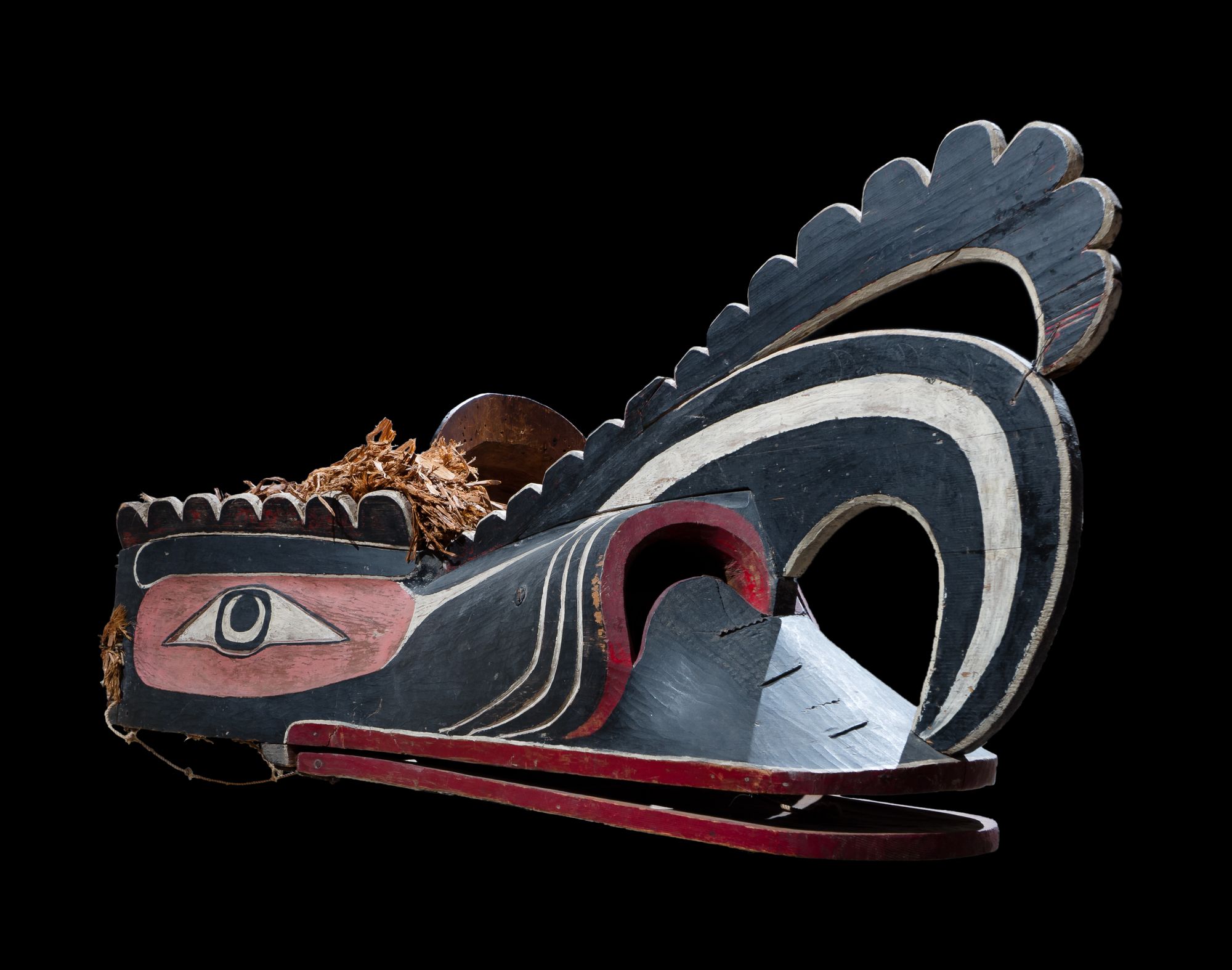
Masquerade balls got their start in Europe during the 15th century as a part of the Carnival season. One of the most famous masquerade balls took place on January 28th, 1393. Bal des Ardents (Ball of the Burning Man, tragically known as such because four of the five were killed in a fire) during which Charles VI of France danced with five other French nobles while dressed as wild men. One of the more famous balls in American history was the Bradley-Martin Ball of 1897, a lavish costume party that cost $9.7 million in today's money. The persons in attendance - John Jacob Astor IV, J. P. Morgan, C. W. Post, Caroline Schermerhorn Astor, and more - all costumed themselves as European royalty - Mary, Queen of Scots, Henry IV, and Marie Antoinette for example.
Halloween is, perhaps, the first thing that comes to mind when thinking of costumes. The exact date for Halloween costumes is unsure, but can be said to have existed for hundreds of years and is, like many other things, a cultural import. The modern incarnation - dressing up as vampires, ghouls, ghosts, mummies, and other popular horror characters - stems from the proliferation of mass media in the early-mid 20th century. It is similar to cosplay but different in the most crucial way: while cosplay can become a career, if not a lifestyle, Halloween is restricted explicitly to October 31st.

Cosplay is set apart from the two traditions in different ways. It is not a ritualistic experience, as the Kwakwaka'wakw'n people believed transformation masks to be, and it is not something that is limited to the upper echelons of society. It is democratic and accessible by nature. The costumes & emotions involved cover a broad scope - from no cost to expensive, simple to complex, and from personal satisfaction to adulation.
The First Cosplay & The First Convention
Assuming that we take cosplay to mean "dressing up or personifying a popular character as a form of expression," the first modern cosplayer can be said to have been William A. Fell, a fan of the first comic sci-fi comic, Mr. Skygack, from Mars by A.D. Condo. The story follows a Martian, My. Skygack, who came to Earth to try and understand humans. William Fell was such a fan of the comic, he dressed up as Mr. Skygack to a festival in Cincinnati in December 1908. His wife joined him as Diana Dillpickles, a prototypical dumb blonde stereotype. A couple years later, in 1910, ice skating rink owner Otto James donned a Mr. Skygack suit to generate interest in his rink. Alas, instead of garnering praise as the Fells did, James garnered unwanted attention from the police - he paid a $10 bail after being arrested for public masquerading.
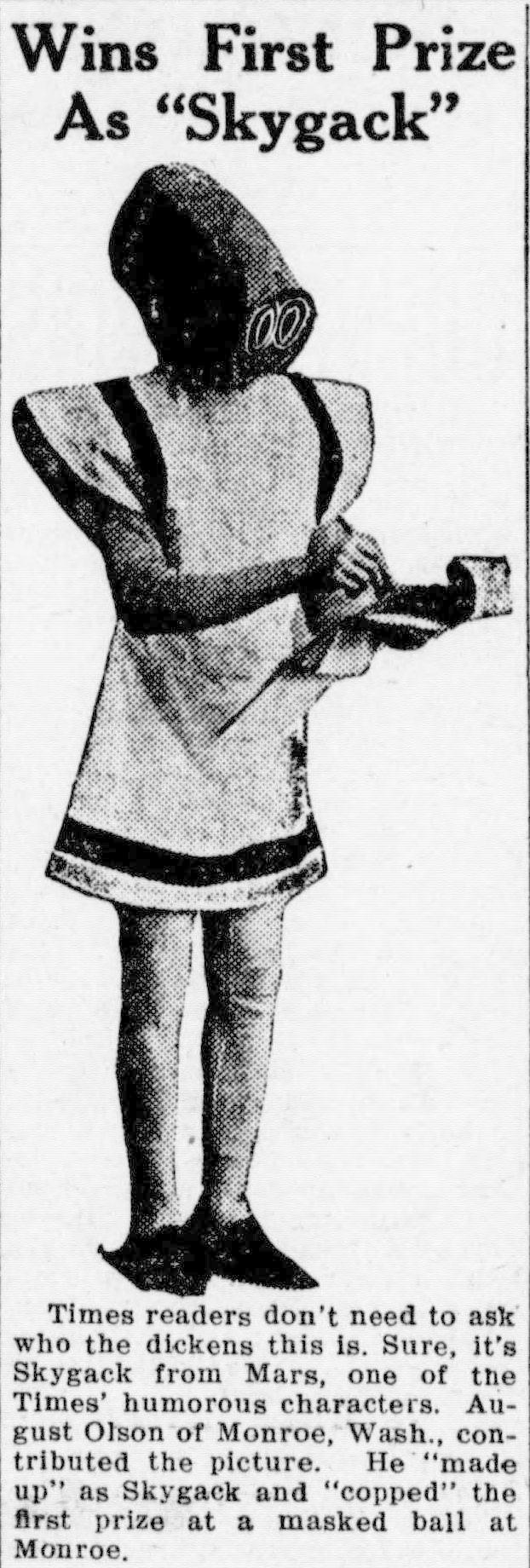
While the Fell's and James represent two of the earliest cosplays, it's nearly impossible to state surely that they were the first - they were simply the first to be recorded. People have likely dressed up as characters they've enjoyed (from myth or fiction), but it is not well documented beyond the religious or entertainment reasons for doing so. In the case of the Bradley-Martin Ball, the wealthy partygoers were, to an extent, personifying the role and image of kings and queens - perhaps thinking themselves to be modern representations. While not cosplay by strict definition, it is at least a close sibling.
More popular than the Fells' is the story of Morojo, who is more widely considered to be the prototypical cosplayer. The "futuricostume" was envisioned and created by Myrtyle Rebecca Douglas Smith Gray Nolan (more commonly nicknamed Morojo). She has been called the Mother of Cosplay and was a pioneer of the art. Morojo, along with then-boyfriend Forrest J. Ackerman (who coined the term sci-fi) attended the 1st World Science Fiction Convention (Worldcon) in 1939. As the story goes, Ackerman wanted to dress up for the event because it was thought that many people would do so. Morojo "envisioned, designed, and laboriously hand-made" the pair's costumes for the night, which were based on H.G. Wells' 1936 film, Things to Come. As it unfolded, they were the only ones dressed in cosplay that night. However, the following year, they were joined by nearly a dozen cosplayers. Slowly but surely, cosplay became more common at Worldcon. From there, it ended up spreading to different conventions and events. Eventually, events focused solely on cosplay and costuming began to arise.
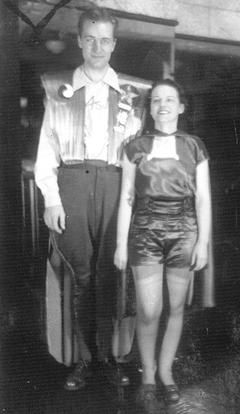
Morojo was heavily involved in the science fiction community. She was involved with three separate sci-fi publications Voice of the Imagi-Nation, Novacious, and Fancyclopedia; and published her own Guteto from 1941 until 1958. Her name, Morojo, was derived from a variation of her initials written in Esperanto, along with Ackerman's middle name, J. Fandoms were vital to her - as they were to everyone involved in them - and helped provide a sense of community.
Why Cosplay?
Why cosplay at all? The combination of reasons is likely to be as varied as the number of cosplayers. Danielle DeNicola loves the act of cosplaying and the community that surrounds it, saying, "...it is the first place I've ever felt like I truly belonged." Meanwhile, Alina Orihara's motivation is the fact that she just loves the characters.
Community & expression are two of the biggest reasons why someone might cosplay. Skill, which might not be considered as often, is perhaps a third big reason. Cosplay is akin to any art that uses the hands to create something where only raw material existed; in that, it is just like woodworking - a hobby, yes, but also a skill to perfect. Still, others might use it as a form of escape or do it just because it's fun.

The Social Network: Friendship, Community, Conventions, and Competition
A search for "why people cosplay" will quickly return a simple answer: for the community. In general, the cosplay community is considered to be incredibly inclusive, kind, and helpful. Those few traits might serve as an imperative reason for people that have trouble socializing in other contexts, need a warm outlet, want to make new friends, or simply wish to share their love and joy towards something with someone else. The community provides itself in several ways, each tuned towards a particular type of person. This does not exclude anyone, but it does offer different avenues of integration for those interested.
Conventions (such as San Diego Comic Con and New York Comic Con) are heavily attended, marketed, and popularized events. Most conventions along those lines will have a buzzing cosplay community. Most of the attendees will likely be amateur cosplayers; they created their costumes at home with the tools and material that they had to work with. Conventions provide an avenue for them to show off their work, mingle with others that may have the same or shared tastes, and get a chance to meet the creator of the character they cosplayed as. A future cosplayer might find themselves attending cons for the atmosphere before a friend asks them to join, as Danielle's did.
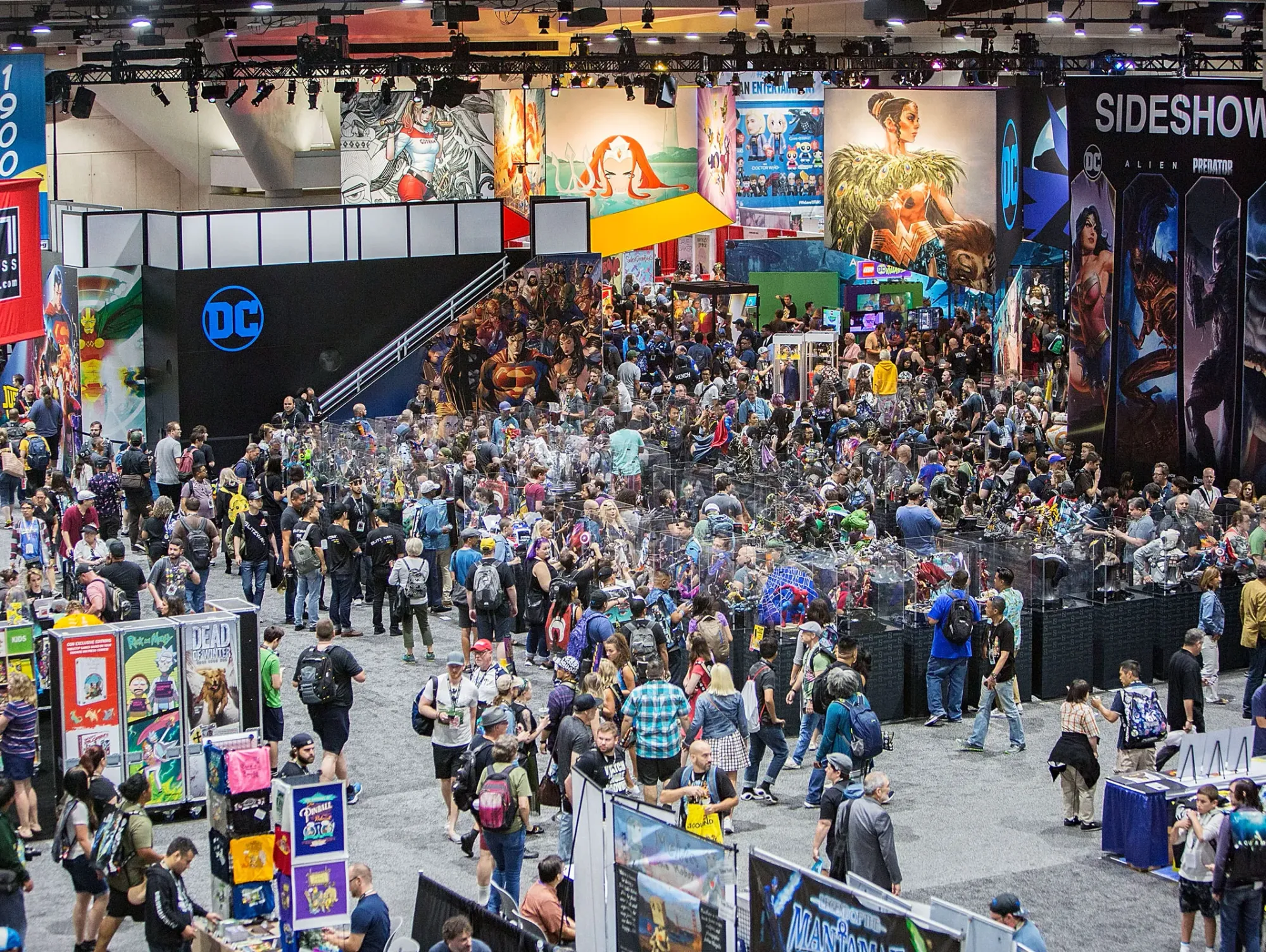
Conventions (and other events) might also feature a cosplay competition. These competitions allow cosplayers to compare and contrast their pieces with others of comparable skill. In most cases, the monetary reward won't come close to covering the time & money spent on creating the pieces. However, winning a competition conveys prestige and recognition of the cosplayers' skill. Judgment will likely be rendered on a variety of factors. Such factors might include accuracy (pertaining to how much the cosplay resembles the original character in terms of appearance), craftsmanship (related to the quality & the details of the costume & props), presentation (pertaining to how like the cosplayer is to the character in terms of portrayal and performance [that is, do their mannerisms and personality match that of the character?]), and audience impact (pertaining to the stage presence of the cosplayer and how well they connected with the audience.)
While cosplay is prominent in the United States and Japan, the way that the countries interact with their cosplayers is dissimilar. The United States and Japan represent two different flavors of the role of the individual in their respective societies. The United States has, since its inception, placed a premium on individuality. It is celebrated and promoted, despite the perception of your peers. The social contract in Japan is different. In Costuming the Imagination: Origins of Anime and Manga Cosplay, Theresa Winge noted that "In Japan, cosplayers are not welcome in certain areas beyond the convention, and some conventions request that cosplayers not wear their dress outside the convention."
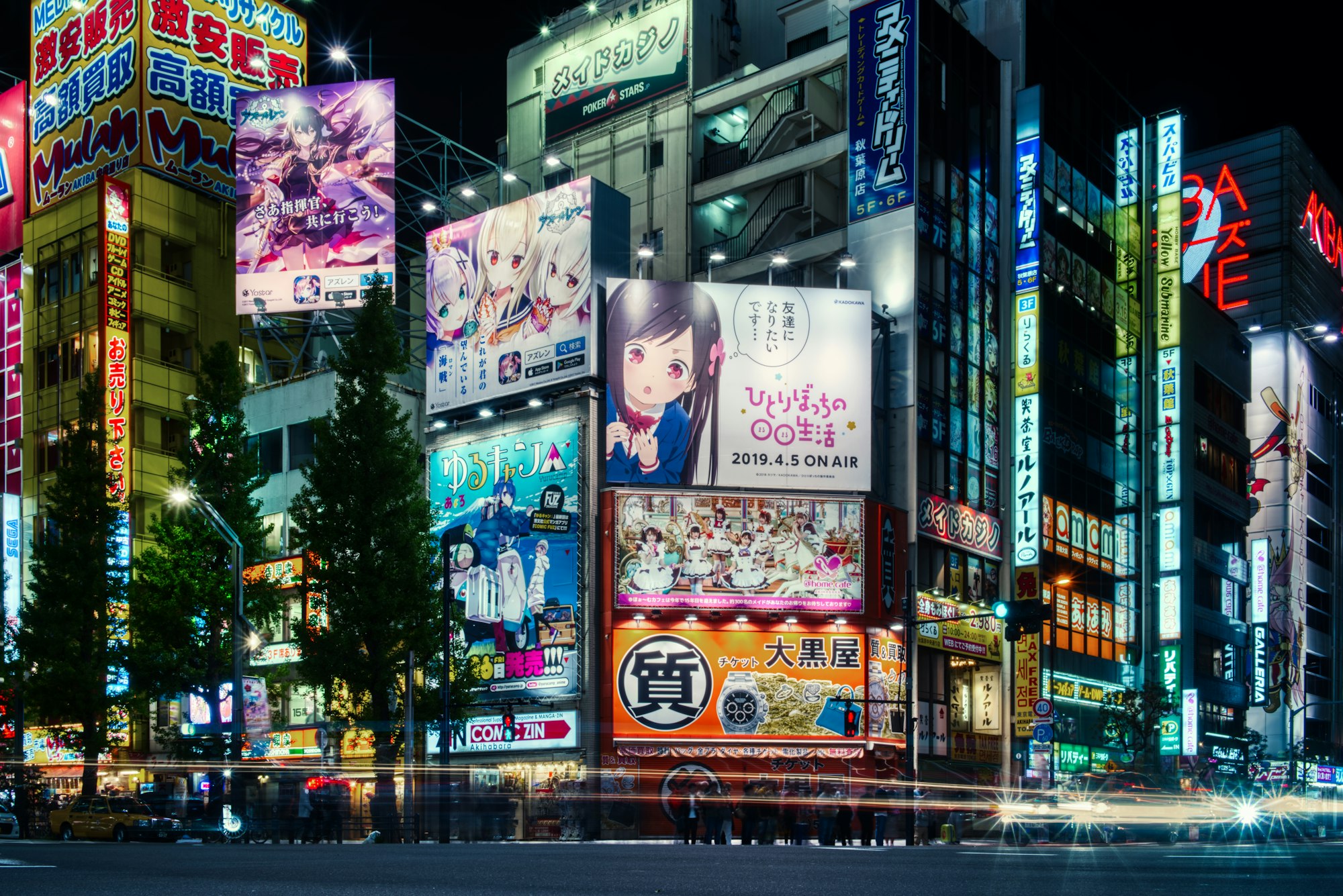
Escapism
In On Fairy-Stories, an essay by J. R. R. Tolkien that discusses the fairy-story genre, Tolkien takes issue with critics devaluing the fairy-story by deriding it as a form of escape.
I have claimed that Escape is one of the main functions of fairy-stories, and since I do not disapprove of them, it is plain that I do not accept the tone of scorn or pity with which "Escape" is now so often used: a tone for which the uses of the word outside literary criticism give no warrant at all. In what the misusers are fond of calling Real Life, Escape is evidently as a rule very practical, and may even be heroic.
The context in which escape is used is paramount: "the Escape of the Prisoner with the Flight of the Deserter." As a philologist, nuance was essential to Tolkien. That selfsame distinction can be transposed to cosplay with little modification. It would be erroneous to assume that cosplayers are out-of-touch with reality or using Escape to "desert their post." Instead, if they feel the walls closing in or are in some other way inhibited, cosplay might serve as a light at the end.
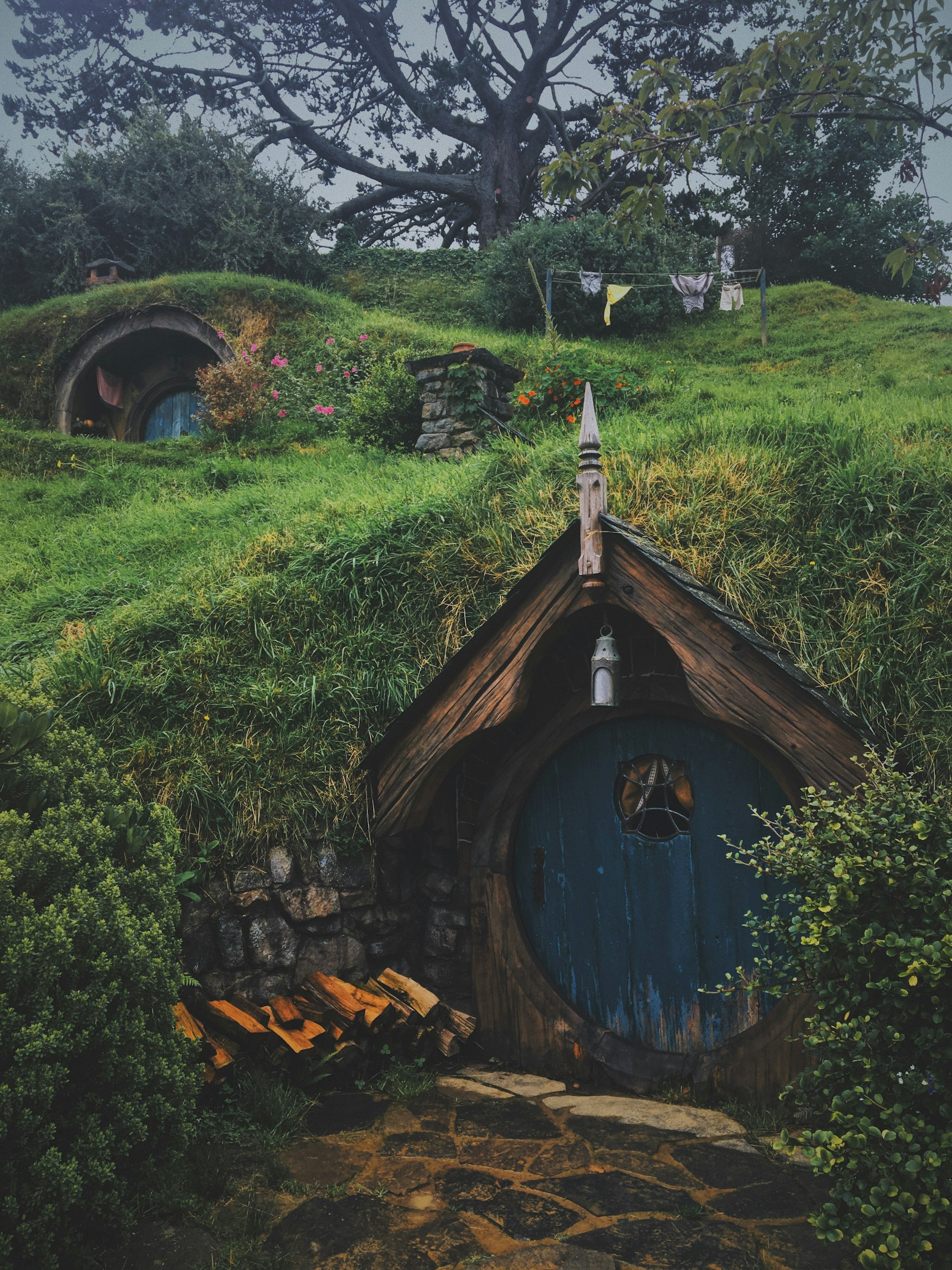
Escape often has a negative connotation, when it ought to be treated with respect. It bears remembering that the opposite of Escape is not "confronting reality": it is imprisonment.
Express Yourself: Creativity and Creative Identity
People look at art as a way to express themselves. Authors desire to express themselves through the written word, filmmakers through the visuals of a movie, photographers to capture a moment in time, and the cosplayer to show their understanding of a character, or how a character could be. "Creativity" returns more than 2,600,000 results on Google Scholar; it's a well-researched domain, and it's generally accepted that it is essential to be creative. You'll be happier, content, and able to deal with problems more effectively - it's not a panacea, but it's closer than other prescriptions.
Cosplay is art. A cosplayer is not a carbon copy of an existing character. Achieving 1:1 purism is impossible; you can only get very close, which requires you to take risks or make peace with your decision - the same with any artist. The variables are tremendous: finances, access to resources, body shape, skill level, etc. Cosplayers must work through issues that arise while dealing with their sense of the character that they are embodying. In most cases, this will likely require them to get creative: "How do I solve this problem? What do I do about this? How do I get around or deal with that?" The questions keep on coming, though they might not always be explicit.

A writer, filmmaker, or photographer is at a bit of a disadvantage when it comes to identity: they are themselves. They can reforge themselves and shift identities - many creatives go through different phases where they try different things. Cosplay is unique in this regard: the identities are many. A critical aspect of cosplay is assuming the character you are portraying. Someone shy in life might become exuberant when they cosplay an energetic character.
On the other hand, an extrovert might decide to cosplay as an introvert. A sea change in personality might be necessary. Cosplay is unique in that by the nature of the act, you undergo a bit of an identity change - if not internally, at least superficially. You might like who you become, though, and that might be woven into your daily life.

Skill
As something that requires no small amount of work to pull off, a cosplayer that makes their cosplays will, by necessity or desire, acquire skills that'll improve them as a person or open up new career paths:
- Budgeting – Creating a cosplay will often require you to spend some money, and depending on the intricacy, your cosplay might end up being expensive. A cosplayer will have to budget appropriately to pull the cosplay off and keep peace of mind. How much will each piece cost? How much will the total be? How much for lodging and attending the event? Joining a competition? Dining? If they plan on selling buttons or posters or something, how much to create them? How much for marketing? What kind of return can the cosplayer expect on their investment?
- Time Management – If a competition or convention is just on the horizon, a cosplayer needs to know how to manage their time wisely. Time and effort spent on one task mean less time for something else. How do you best use your time? What will have the most impact? How far away is the con? What do I have to get done between now and then? What materials do I need to order? When will they arrive? Part and parcel of time management are being prepared for all eventualities. Your plans will undoubtedly go awry.
- Networking – A convention is a fantastic place to meet other like-minded people and people that work in or adjacent to your hobby. Networks help open opportunities that you might otherwise have missed.
- Makeup – To get the look right, you often will need to use makeup. Not everyone has the right complexion; beyond that, characters might be green, red, blue, pink, or anything else. Beyond the color is the intricacy required. One great example is body painter Kay Pike, who uses body paint applied over hours to achieve the look of the character.
- Sewing – The cosplay must fit well. Being able to sew the fabric you need is a near requisite if you want to make your cosplays by hand. You must be able to tailor and stitch what's required accurately. As you improve, the seams become less noticeable, and your cosplay begins to look more and more like a cohesive whole.
- Design – A cosplay does not spring out of the ground, fully formed. While the process differs from cosplayer to cosplayer, there is likely some design work that goes into creating the pieces. This could include the precise material you'll be using (and the skills to go with it - cutting or sewing or painting or printing), the proper length and weight you can safely manage, which pieces are easier to make and which need more time, and what the finished cosplay will look like. You could do a basic sketch of what it'll look like or a complex blueprint.
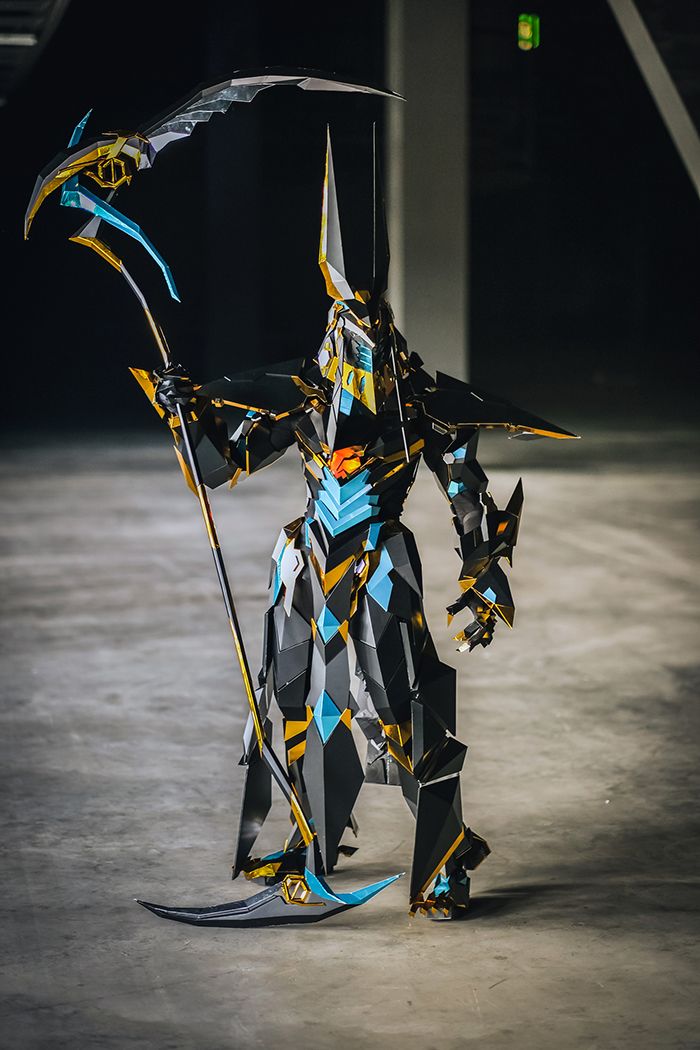
The skills you acquire - either meta or practical - are transferable to other areas of your life. Budgeting, time management, and networking will all help you in any endeavor you pursue, while design, makeup, and sewing can get you hired in any number of fields or industries such as beauty, film, graphic design, and more.
Derivation, Inspiration, and Purism
It might be challenging to decide on your favorite cosplay. Some might hold special significance – your first, the most recent, one that you put together over a long period or during a crunch. Still, if you cosplay enough, you'll probably have portrayed a range of characters. Each character holds some meaning for you. Maybe you just really liked that game or anime, or you connected with a particular character, or you see yourself in the character, or the character looks like you, or, or, or. Whatever the reason, something clicked, and you decided to cosplay them.
Media and entertainment have long been powerful influencers. People have been enamored with historical and fictional characters since forever. Before the rise of new media, you had the books that shaped societies and generations, that had a powerful impact on pop culture, or whose characters have transcended time. Dracula gave us Count Dracula; A Princess of Mars gave us John Carter and Dejah Thoris; Frankenstein gave us the Monster and Victor Frankenstein; while Treasure Island helped popularize our current idea of what pirates looked and acted like.

It's interesting to consider the time elapsed between the invention of a character and its portrayal. Consider any number of vampire-inspired cosplays, such as Danielle DeNicola's Mavis Dracula from Hotel Transylvania. The modern incarnation of the vampire is old - Bram Stoker's classic Dracula was published in 1897 and has had an outsized impact on the mythology of the character. What we know about vampires now comes from it. However, Dracula was not the first vampiric legend, and the idea didn't one day appear in Stoker's mind out of the blue. The modern concept that Stoker popularized began sometime in the 18th century, but most cultures have some sort of vampiric folklore.
While books continue to impact and shape the world around us, new forms of media have begun to crop up and shape the modern world. The most obvious are film, television (anime, in particular, in the context of cosplay), and video games. Each medium has brought something new, unique, and exciting to the world of narrative. As with all forms of fiction, the character is at the center: who is doing what when, where, and why? Each character (hopefully) has its own identity that sets them apart from the others. It's these identities - the sum total of the look, feel, and manners - that a cosplayer embodies in their tribute. Oscar Wilde said that "Imitation is the sincerest form of flattery." This could not be more correct than when it comes to cosplay. The art itself is defined by the ability to imitate a character.

One point I'd like to consider is the difference between unfettered creativity and creativity on rails. To a certain extent, cosplay is on rails. Because most cosplays tend to be a take on a character, the cosplayer is more limited than, say, the creator. This is inherent to the act of cosplaying as it is currently conceived - a character is chosen, and the cosplayer tries to embody the character. Their success in embodying can vary as a result of effort or by design - they might make the conscious choice to act out of character or put their spin on the character (a sexualized version, or a genderbend, or a chimeric adaptation). Still, the germ of the character will be retained in the cosplay. In cases like this, the character serves as a blank canvas for the cosplayer. They can take it to any extreme or length that they wish. While a 1:1 cosplay might not happen, this instead leads to something else: adaptation.
The creative landscape is defined not by original creation, but by adaptation. Original suggests that something is the first or the earliest. That is rarely the case in its entirety. The phrase "There is nothing new under the sun" might fit here. Instead, creation will be one or more steps removed from the original. This is evident in storytelling - the hero's journey, archetypes, and other models exist because they are tried and true methods.
It's important to remember that entirety is the operative word. One of the reasons that remixes are so popular is because they take something that you know and put a spin on it. The end product is something unoriginal but evolutionary. In On the Origin of Species by Charles Darwin, he said that "...endless forms most beautiful and most wonderful have been, and are being, evolved." Creation is an evolutionary process. It takes what exists and adapts, remixes, remolds, and repackages it into something seeded by the original thought but new in form.
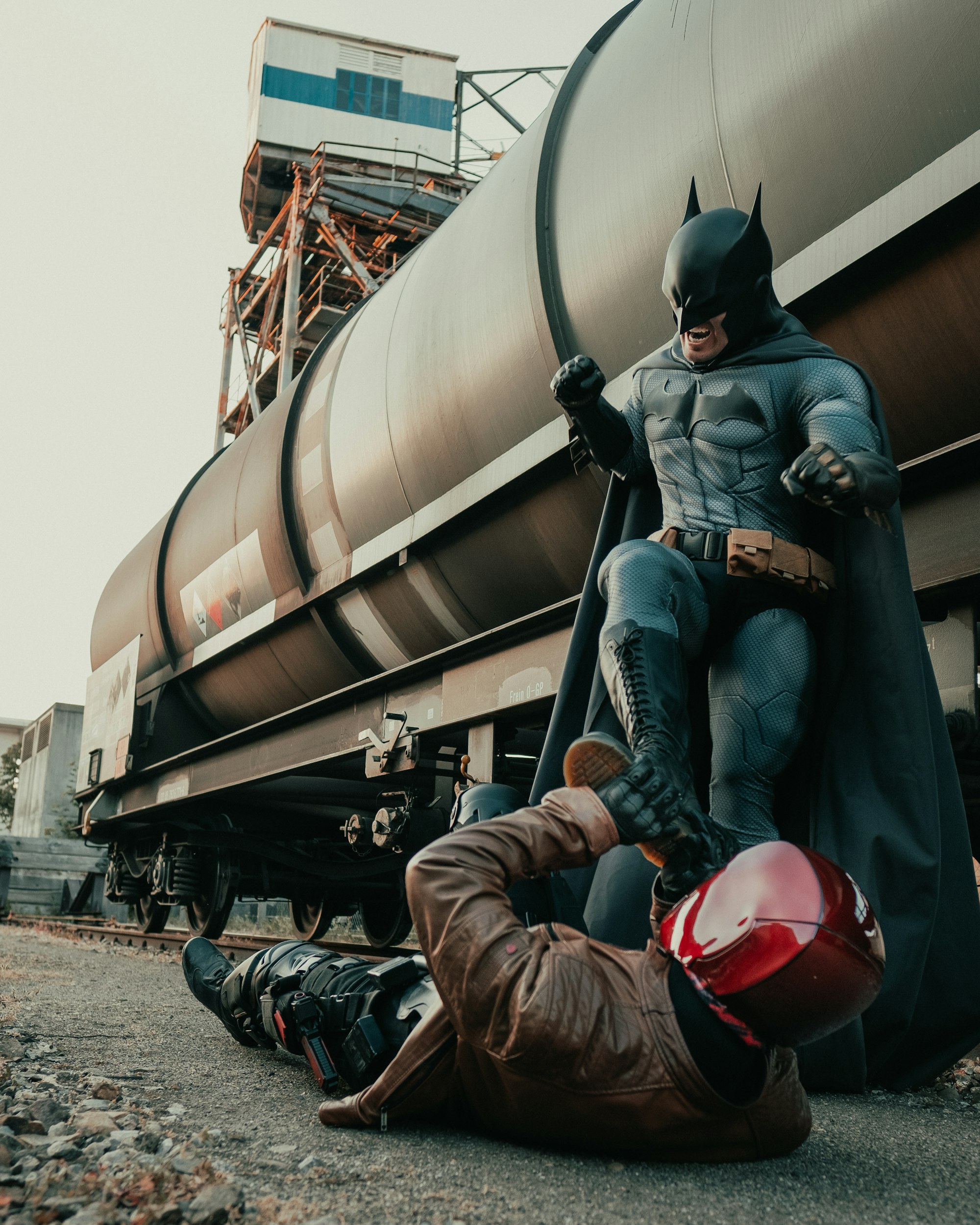
This process leads to the debate that lingers over all adaptations - how similar is the new to the original? Whether it's The Lord of the Rings, The Hobbit or Harry Potter being adapted into films, Watchmen or Game of Thrones being adapted into T.V. shows, The Witcher saga being adapted into a video game, or a beloved character being cosplayed, the question of "How similar?" or "How pure?" is it will arise.
"Pure" can serve one of two functions: as a criticism of the creator or as an aspiration for the creator. The objection can come in myriad forms: it might be that you don't act like the character, your skin color is wrong for the character, your body type is wrong for the character, or anything else. It's impossible to talk about "purism" without discussing the less than savory connotations it conjures up: racism, body shaming, and other grotesque implications. It is defeatist to consider purism at all; 1:1 resemblance is impossible to achieve. Wes Johnson put it most succinctly: "It doesn't matter how you [got] the costume, how much time or money you spent, how accurate it is, or how trendy. All that matters is that you are having fun and not hurting/offending anyone. If you can do that, then you are cosplaying right."
Fandom & The Death of the Author
In his 1967 essay The Death of the Author, Roland Barthes argued against authorial intention, holding instead that creator and creation are unrelated. While it's difficult to entirely separate an author or filmmaker from their work, as soon as it's put in the open, the creator will lose some sense of ownership. While it's not exactly in the public domain (understood as that vast ocean of works that belong to everyone and no one), it's no longer private either. The creator releases some of the holds they have on their creation and allows others to be inspired by it. It's this concept that enables fandoms to come into being. Sure, you can have a fandom around something you share with family and friends, but that's unsustainable.
Wikipedia defines fandom thus: "A fandom is a subculture composed of fans characterized by a feeling of empathy and camaraderie with others who share a common interest." Whether Star Trek, Harry Potter, Naruto, Attack on Titan, or anything, you'll find a plethora of fan-created material. This could be fanart, fanfiction, cosplay, conventions, fanzines, or more.

The first modern fandom can be traced back to Sherlock Holmes. After Doyle killed off his popular character, fans staged mournings and began writing fanfics (this is particularly interesting where Sherlock Holmes is considered. You can find a list of works in the Sherlock Holmes canon, as well as extracanonical - fanfiction - works.). Since then, fandoms - like cosplay - have become more accepted as a part of everyday life. Conventions are probably the most significant fandom-related events that happen annually and bring in tens, if not hundreds, of thousands of people.
The fanbase that comprises the fandom can have a powerful impact on authorial intention as well as the property as a whole. While they might not own it, their stake is significant. Doyle resurrected Sherlock after public outrage. Either through social media, petitions, or other organized protests, fans have revived shows that were killed off (Firefly got a movie, Serenity; *Brooklyn Nine-Nine was picked up by another network; Friday Night Lights for 3 extra seasons. You can find a list of 16 shows fans helped revive here.) Fans have pairings they like in shows that the writers might then incorporate, or they might not like how something is progressing, forcing the showrunners to think about how to continue. In the case of cult classics, you have a die-hard, but small, fandom for something short-lived (Twin Peaks, for example).
While the appropriation of copyright might rub rightsholders the wrong way, it is better thought of as a way to bring more people into the fandom. The more fans of a property, the more likely it is to be successful. Fans are a significant part of that: through word of mouth, they get their family and friends interested in something, creating new fans in the process - and the process continues until, as in the case of Attack on Titan or Game of Thrones, you end up with worldwide phenomena that even nonfans know something about.
Controversy
Nothing is without controversy, and cosplay is no exception. One of the most critical issues to deal with is sexual harassment at conventions. The Cosplay is not Consent movement has been around since 2014 but has gained more steam in the wake of #MeToo. To an extent, the community polices itself. As said by Mia Galuppo & Katie Kilkenny in their Comic-Con: Cosplay Community Looks Out for Their Own Amid #MeToo Era article, "...cosplayers on the ground in San Diego say the community is able to police itself, with harassers being outed and forced out of events. Attendees abide by their own code of conduct, a practice initially formed out of necessity and now codified into Con practice — like asking for pictures before taking them and respecting physical boundaries."
While self-policing is helpful, the conventions that host the events must be part of the dialogue as well. Anti-harassment or zero-tolerance policies are likely to be part and parcel of the terms & conditions for attending, but lip service is different from action. Unwritten rules ought to be codified (as is already underway). Beyond that, attendants should be ready & willing to come forward on another's behalf if they see a transgression. If a convention doesn't have anti-harassment or zero-tolerance policies, it's worth investigating why and trying to get them to change their minds.
Sexual harassment doesn't just occur at conventions; it continues online. This might be through direct outreach or public comments on Twitter, YouTube, or Facebook. While invective is a constant and shared alike by men and women, it's worse for the latter. In an interview with VICE that explored the dark side of cosplay, Vivid Vivka said of online harassment "Online harassment is a constant flow, and it's downright nasty. In person, it's a different story. People would ask for a photo, and "jokingly" grab my butt. Lewd, tactless, raunchy things would be said or asked of me, and followed by a "J.K… unless you will." I feel like a lot of people don't realize they are overstepping their grounds, and they don't realize how hurtful, scary, and gross they are being."
Along with sexual harassment and gender equality, race issues surrounding race are under the microscope more than ever, whether it's #OscarsSoWhite, #MeToo, Time's Up, or HeForShe; or any of the many new stories that cover the social issues of our time. The United States' original sin is slavery; it follows that race has always been and will, for the foreseeable future, remain a contentious topic, especially within the current political climate. A short, incomplete timeline might serve well:
- 1619 - The first African slaves are brought to Jamestown, Virginia (although this History article suggests a much earlier date, in the 1400s
- 1776 - The Declaration of Independence is published: "We hold these truths to be self-evident, that all men are created equal, that they are endowed by their Creator with certain unalienable Rights, that among these are Life, Liberty and the pursuit of Happiness."
- 1863 - The Emancipation Proclamation goes into effect
- 1964 - The Civil Rights Act of 1964 goes into effect.
The United States is two generations removed from the law that, in the eyes of temporal justice, effectively made everyone equal. The reality is different, and two generations is not long enough to forget the scars of centuries past; enemies of the CRA are still alive, after all, and it doesn't take much for a parent to pass their discriminations to their children. In an article published in February of 2019 for WSU, entitled Social Issues in Cosplay: Racism, editor Holly Rose Swinyard of The Cosplay Journal wrote regarding the perception of racism vs. the effect:
"And it's not just language or slurs that are commonplace; there are so many people who think that making your skin colour darker/giving yourself more ethnic features (making your eyes look more Asian, making prosthetics to mimic black features etc) is the same as painting yourself blue or green or adding elf ears. Those who do this claim that what they are doing is not blackface or raceface, since, in their minds, what they are doing isn't mocking people of colour, and yet they are being told over and over again that it is hugely disrespectful to use someone's race as part of a costume."
It's a fine line to walk. Any transgression might land you on the receiving end of invective, despite no harmful intention on your part. In the end, it remains a judgment call.
Interviews
Theresa Winge, Alina Orihara, Danielle DeNicola, and Wes Johnson were all kind enough to take some time to answer my questions about their experiences cosplaying and, in Ms. Winge's case, meta-questions about cosplay. You can read the (lightly) edited interviews below.
Alina Orihara
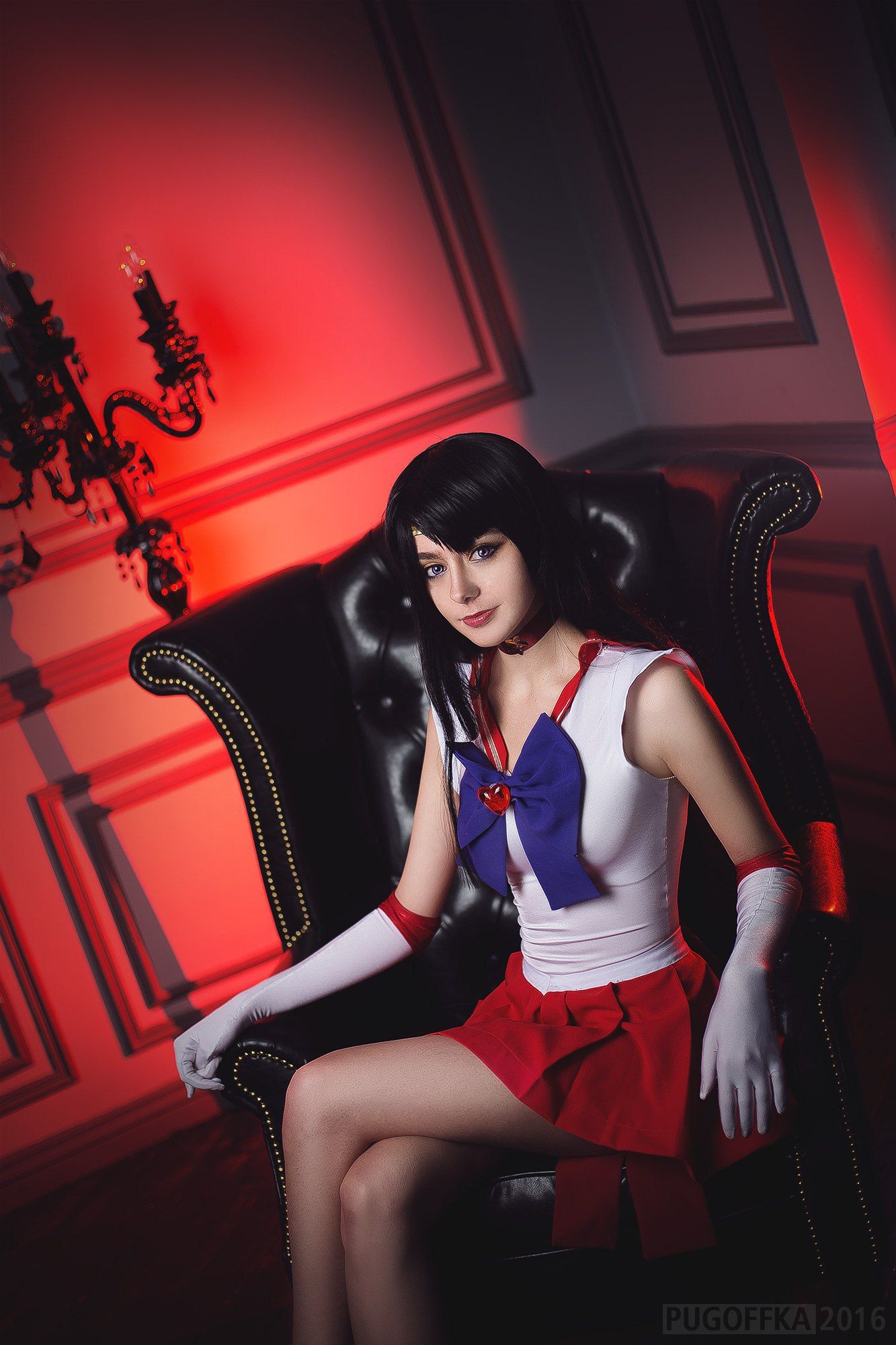
YS: What got you interested in cosplay?
AO: I'm interested because of the possibilities to convey the the character and image of my favorite characters. I can tell their story the way I see it.
YS: What is the cosplay scene in Russia like?
AO: There's a very high level of cosplay in Russia. In addition to the high requirements for costumes, we try to make high-quality photoshoots that convey the emotion of the character and fandom. We have many festivals in which we don't just put on a costume, but act and dance.
YS: How is it different - or how do you think it's different - from cosplay in other countries?
AO: Primarily a more serious approach to the quality of cosplay and the interesting format of the shows during festivals.
YS: How do you stay motivated with a hard cosplay?
AO: My main motivation is my love for the character.
YS What do you think of the cosplay community at conventions?
AO: I love meeting friends and making new friends at festivals. I think it's a great communication format.
YS: With social media, you have an always growing portfolio. What career paths do you think cosplay has opened up for you?
AO: Thanks to cosplay, I've been able to participate on the jury during cosplay festivals. I'm invited to conduct online broadcasts in which I share my experience in cosplay. I think it's an interesting experience. I've also been on the covers of some cosplay magazines.
YS: How important is being exactly like the character you're cosplaying?
AO: Personally, it is important for me to have a resemblance at least in general terms.
YS: Is it more important to get the character exactly right, or add your own artistic vision?
AO: I think it's great to bring something new to the character, but to still be in character. This way, we can expand the idea of a particular character. I love the photo shoot in the style of an Alternate Universe.
YS: What's been your favorite cosplay so far?
AO: I love each of my characters and can't single out one
YS: How can cosplayers support themselves? And how can the wider fandom support the industry and the people in it?
AO: I don't think I can answer that question. I treat cosplay as a hobby and am not focused on making money from it. Some people why photo prints from me or just make a donation, but this doesn't cover the cost of cosplay. It's just a nice bonus.
YS: Is there a cosplay you've been to try, but haven't been able to just yet?
AO: Hm... probably not. I've been dreaming about an Evangelion Mari cosplay for five years, but this year my latex master and I finally realized this idea.
YS: Is there an example that you think is the best cosplay you've ever seen?
AO: You will not have enough space in the article to put in all the cosplays that I think are beautiful :)
Danielle DeNicola
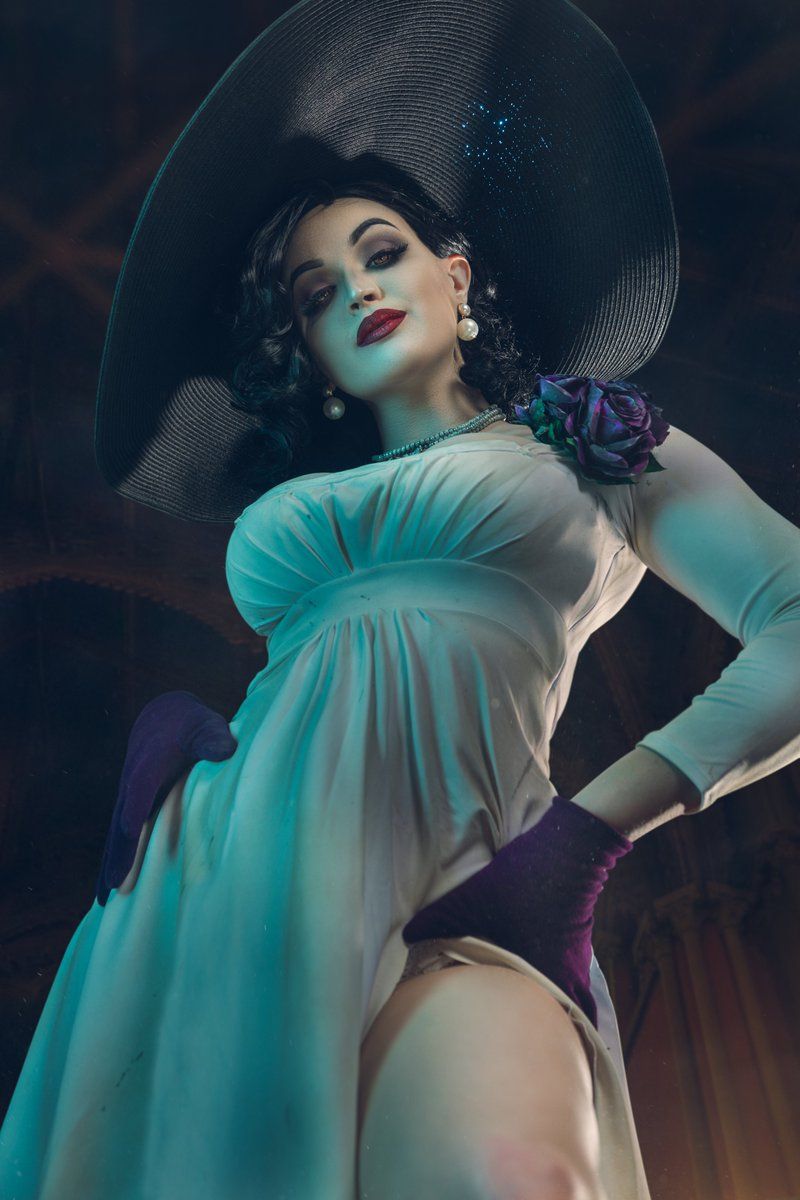
YS: What got you interested in cosplay in the first place?
DD: I attended cons for years without dressing up, but knew a lot of people who loved it. I was, and still can be, painfully shy. It only took one friend convincing me to cosplay with her though, and the rest is history.
YS: What is your process - from deciding on who to cosplay, to getting the cosplay ready?
DD: Deciding what to cosplay doesn't necessarily have a process, although it's one of the questions I get asked the most. It's probably the most chaotic and sporadic part for me, it's honestly whatever I'm interested in or inspired by in the moment and then I go full speed ahead.
YS: Some cosplays might take a long time to come together. How do you prevent burnout?
DD: Listening to your body and taking breaks when you want them is the only way to prevent burnout. Even then, everyone will experience it at some point with deadlines and various expectations. It's important to realize when you're doing it cause you feel like you have to, versus want to. It's the same with every art medium, which is why it's so challenging to balance.
YS: Why do you continue to cosplay?
DD: Because I love it and the community that surrounds it is the first place I've ever felt like I truly belonged.
YS: What are some of your favorite cosplay resources? What resources do you wish existed?
DD: YayaHan has absolutely changed the game when it's come to accessibility of resources, singlehandedly bringing High Density crafting foam, cosplay fabrics, and trims to Joann Fabrics. I use her, as well as Lumin's Workshop, for many supplies. Also, we can't ever rule out Amazon Prime for crunch time.
YS: What do you think the perception of cosplay is from someone who doesn't do it, or might not understand it?
DD: It most likely seems silly to many people who aren't a part of the family. It depends on how you look at it though, because I'm sure there are many people who wish they could make things for Halloween year-round.
YS: With social media, you have a living portfolio. What career paths does cosplay illuminate, or what careers are most suited for cosplayers, beyond cosplay itself?
DD: You do! There are many avenues that the pioneers of the industry have paved for us. For example, some cosplayers have ventured into acting, hosting, and voice acting with cosplay as a stepping stone. There are others who book gigs regularly with popular game companies cosplaying as their characters for events, or promoting new games/characters/skins. You can also just work for yourself and offer various rewards and content with subscription services. The world is your oyster, really.
YS: How important is purism? That is, a 1:1 match with the character? Do you think it's more important to embody the character, or have your own artistic interpretation?
DD: This answer will differ vastly from one country to the other. It will also differ vastly from person to person, depending on how they interpret the art. Personally, I think that having fun and enjoying yourself is the priority and everything else comes second. If you want to becoming a living copy of the character, do it! However, I don't think it's necessary, and it also feels unfair to minority groups who may not have as many options to choose from as others.
YS: What's been your favorite cosplay thus far?
DD: I have many, but I'd choose Jaina Proudmoore, my Blood Elf Mage, and Bakugou.
YS: Is there a cosplay you've wanted to try, but haven't been able to for one reason or another?
DD: Nova Terra from StarCraft keeps slipping through my grasp for one reason or another. I've started her multiple times in the past few years and had to stop for one reason or another. Soon, Nova, soon.
YS: What are some of the challenges you've needed to overcome with your cosplays?
DD: At first, money was the biggest hurdle. If you add up the cost of wigs, contacts, materials, shipping, travel, con expenses, etc., it became very overwhelming very quickly. Now it's shifted to time management, because essentially running a business from behind the scenes, while also starring center stage in front of the curtains, has become much more than a full time job.
YS: What's your example of the ideal cosplay? Is there a particular cosplay that you hold as the pinnacle?
DD: In my opinion there is no ideal-- as with most art, many things inspire me for different reasons. If we're talking about contests, then usually they're looking for someone with a mastery of many different skills showcased in one costume as possible.
YS: What separates the amateur from the professional?
DD: It doesn't feel right for me to be the one to make that distinction. I believe that's for the person cosplaying to decide for themselves.
Theresa Winge

YS: What impact do you think contemporary anime, manga, TV has on cosplay vs. traditional? Is there a significant difference in popularity between old vs. new cosplays?
TW: In Costuming Cosplay (2019), I share my research about Cosplayers and their characters who rise and fall in favor according to numerous factors. I think it depends on the Cosplayer or Cosplay community. Cosplayers tend to choose characters that reflect their consumption of popular media, literature, animation, etc.
YS: What impact do you think events like masquerades have had on the evolution of cosplay?
TW: Masquerades play a significant role in introducing CON-friendly subcultures to the activity and the roleplayed characters. It also provides media with an opportunity to capture images of and interviews with some of the best Cosplayers at conventions. And, the masquerade gives Cosplayers a chance to show off all of their hard work and creativity.
YS: Cosplay, in its current form, seems to presuppose the existence of a character. Do you think original creations by the cosplayer would still be considered cosplay? Or would that fall under a different category?
TW: Yes, original characters are cosplayed by Cosplayers. These original characters may have fanfiction associated with them, but sometimes they stand alone as solely a character the Cosplayer created.
YS: What impact do you think the Japanese economic boom of the 80s had on the popularization of cosplay in the US? As an artform?
TW: As I discuss in my book, Costuming Cosplay, there were many factors and many more complex impacts from the 1980’s economic boom in Japan and how it contributed to the its popularity in Japan and perhaps the world. What may be more important, and something WIRED magazine recognized decades ago, Japanese teenage girls have the power to popularize Cosplay and help establish it as a global phenomenon.
YS: How would cosplay be different without the cultural exchange between the US and Japan?
TW: I am not sure I can offer an answer here. The cultural exchange is truly global, despite most of the popular characters coming from the USA and Japan. This becomes clear with the celebrity Cosplayers
YS: What is it about video games, manga, and anime that make those cosplays more popular than films (excluding superhero films) or books?
TW: Popularity of characters regardless of media goes in waves. Japanese characters seem to be where your question focuses, and, yes, these types of characters are popular for Cosplay. I suspect the reasons vary and reflect the popularity of the characters within its given
YS: Halloween seems to feature more classic costumes – vampires, mummies, pirates, Frankenstein's monster, etc. Why do you think the "classics" don't feature as heavily during conventions?
TW: I think it all depends greatly on where and when and who and context. Classic characters and costumes tend to be favored by parents who dress small children for Halloween, but as children age, they tend to choose characters that reflect their consumption of popular media. And, comparably, some fan conventions attract classic characters more than others. Classic characters also become popular again when they are featured in blockbuster movie or viral video, etc.
YS: How vital is purism to cosplay? Is it more important to go for a 1:1 match with the character, or add more artistic inflection?
TW: Accuracy depends entirely on the Cosplayer’s perspective. The Cosplay community, however, may not accept or even acknowledge characters that stray too far from their representation within the original media. My research showed that Cosplay communities are very accepting of new interpretations of characters, but less enthusiastic for character portrayals that included blackface or
YS: What separates the amateur cosplayers from the pro cosplayer?
TW: Some might say the answer would involve the type and many competitions a Cosplayer has been involved and/or won. Others might suggest you are professional Cosplayer when you have professional training in a specific skillset. And, still others might conclude that unless you are paid to be a Cosplayer, you are not a professional Cosplayer.
YS: What kind of career paths does cosplay open up to cosplayers?
TW: Some Cosplayers create businesses related to Cosplay activities, such as costume designers, Cosplay photographers, etc. But it seems that most Cosplayers have “day jobs” that support their Cosplay lifestyle.
YS: Acceptance of cosplaying seems to be more of a cultural thing – with, as you note in Costuming the Imagination, Japanese cosplayers not being welcome in certain areas and being asked not to wear their cosplays outside of the convention. How do you think the perception of cosplay & cosplayers has evolved since 2006? Has it become more acceptable, or is there still some cultural reticence?
TW: Cosplay is more accepted now. But there is still discrimination. I regularly read news articles and social media posts about harassment to Cosplayers. I think that as Cosplayers advocate for women in costumes and demand space at fan conventions, they will be even more accepted. And, as the general public becomes more familiar with Cosplay, the more likely harassment will decrease. That is my hope.
YS: Do you think the cultural contrast between cosplay in North America and Japan is growing or shrinking?
TW: Regarding Cosplay, it is reducing and becoming very similar.
YS: While cosplay has faced prejudice as an activity, masquerades and Halloween don't seem to share the same bias despite being similar. Why do you think that is?
TW: I assume you are referring to cultural appropriation and racial/ethnic biases in the costumes/dress of the Cosplayers, as well as sexual harassment toward Cosplayers. In my experiences and research, I find that almost any situation, fan convention or Halloween party, where women dress in costumes, they experience unwanted attention. And, it is regularly in the news in fall that people are having Halloween parties or pictures from past parties surface that show people wearing costumes and makeup that is insensitive.
For these reasons, donning a costume needs to be done with sensitivity to the character being portrayed and any peoples they may represent.
YS: What impact does existing copyright law have on the depiction of characters?
TW: This is a very interesting question. One that I also had during my research. But, to date, the answer is unknown. While Disney does not want fans to dress as characters while visiting one of their parks, they have not (to my knowledge) sued anyone representing a Disney character for Cosplay. Disney does not represent all of the Cosplay characters, but as a company they are very territorial and litigious. Still, they seem to appreciate Cosplay representations of Disney characters.
But, I suspect in time, companies may pursue legal resources for areas they feel there are copyright issues.
Wes Johnson
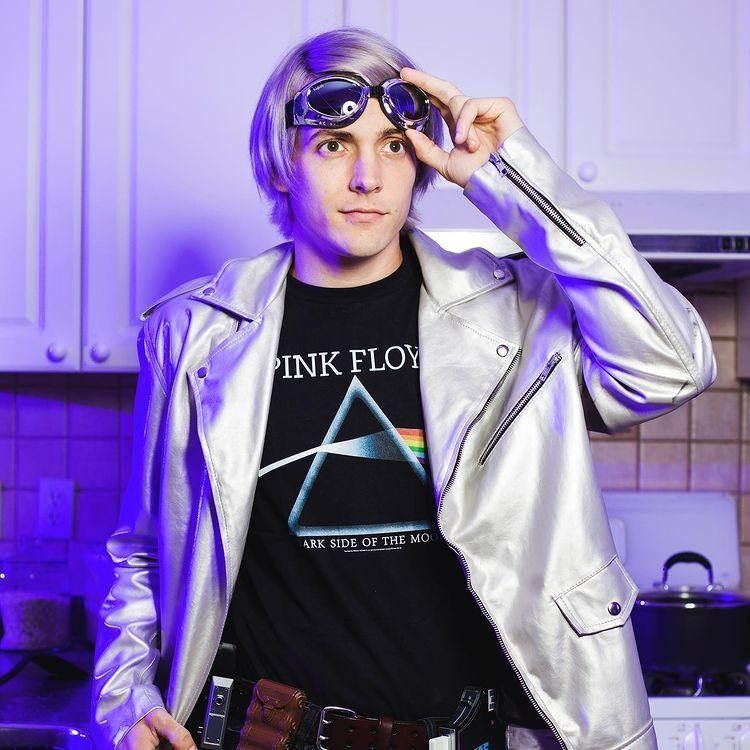
YS: What got you interested in cosplay in the first place?
WJ: Well, I've always loved dressing up in costumes. Ever since I was little I was dressing up like a Jedi, Indian Jones Etc. but I didn't find out about Cosplay until I was about 21. Once I found out that people loved it as much as I did I was hooked! I had first "Cosplayed" at SDCC in San Diego 2010. I was going to my first Con ever and had no idea that they even existed. (I was the nerdy black sheep of my family haha) I needed more information about Comic conventions, so I googled "Comic-Con". The first images that show up are always pictures of cosplayers, so I thought you had to (I also really wanted to). So I bought a Devil May Cry 4 Dante costume online and wore it! It was a blast and everyone was so nice about it. After that I was hooked!
YS: What is your process - from deciding on who to cosplay, to getting the cosplay ready?
WJ: My process haha. Well, for choosing who I want to cosplay, it's pretty much always a character that I'm a huge fan of. I know it's technically part of my job, but I've never really picked "Trendy" characters to do. Sometimes it's both for me, but I usually just pick characters that I personally love. Laguna from Final Fantasy 8 for example. Most people won't have a clue who he is, but the look on people's faces when they recognize it is absolutely worth it.
YS: Some cosplays might take a long time to come together. How do you prevent burnout?
WJ: Well, being 100% honest, I usually have a lot of help from my extremely talented friends when making my costumes. I didn't used to have a ton of time to make anything myself, but now that I do I am slowly teaching myself all the necessary skills to do it myself. I personally think that there's nothing wrong with hiring people to make costumes if you have the resources. You are supporting someone in the industry AND you get a badass costume.
YS: Why do you continue to cosplay?
WJ: Because I love it! It's so much fun to come up with shoot ideas, hang out with like-minded friends, and play as your favorite characters. It's always really incredible to get pictures back and go "OH DAMN! These are amazing!!". All of the photographers I work with are incredible. They just need to endure my constant joking about them "Fixing it in post".
YS: What are some of your favorite cosplay resources? What resources do you wish existed?
WJ: For me my favorite Cosplay resources are my friends. If I run into an issue, they've normally had the same problem at one point or another. Youtube/Google are also amazing resources when you want to figure out how to build something. As for resources that I wish existed, I wish there was a better way to shop for parts/fabric/etc. online. It's normally better to buy materials in person, but if everything had a video showing off the materials it would be a lot easier. (And I wouldn't have to drive anywhere!)
YS: What do you think the perception of cosplay is from someone who doesn't do it, or might not understand it?
WJ: Haha I honestly don't know. My family still doesn't really get it I think. It may just look like people who constantly want it to be Halloween, but I think it's slowly becoming more and more mainstream.
YS: With social media, you have a living portfolio. What career paths does cosplay illuminate, or what careers are most suited for cosplayers, beyond cosplay itself?
WJ: I mean, for some its a modeling portfolio. Others are showing off their crafting skills. Many of my costuming friends are now working on film/TV making costumes for the big studios. Marvel/DC as an example.
YS: How important is purism? That is, a 1:1 match with the character? Do you think it's more important to embody the character, or have your own artistic interpretation?
WJ: Honestly, either way is great. Cosplay is just that "PLAY". It's dressing up as your favorite character and playing as them. For myself, I prefer to make myself look as close as to the character as possible so that I can do some awesome photo shoots with my friends. But that's how I want to do it. It doesn't matter how you go the costume, how much time or money you spent, how accurate it is, or how trendy. All that matters is that you are having fun and not hurting/offending anyone. If you can do that, then you are cosplaying right. Doesn't matter if you spent $10,000 or you're using a trash bag as a trench coat. Just have fun.
YS: What's been your favorite cosplay thus far?
WJ: Ooof. Lots of people ask me that question. Honestly? It changes all the time. Right now I'd say Cloud or Laguna. Mostly because I love the characters and I had an absolute blast doing shoots as them. The people I cosplay with really make the experience for me.
YS: Is there a cosplay you've wanted to try, but haven't been able to for one reason or another?
WJ: TONS. First one off the top of my head is Nero from Devil May Cry 4. One that I'm about to start on is Irvine from Final Fantasy 8. I've been wanting to make him for forever.
YS: What are some of the challenges you've needed to overcome with your cosplays?
WJ: Getting into them/wearing contacts. I hate contacts. Also, they can be very expensive.
YS: What's your example of the ideal cosplay? Is there a particular cosplay that you hold as the pinnacle?
WJ: For me I would probably say Maul Cosplays Geralt is pretty far up there. Both he and his wife do an incredible job.
YS: What separates the amateur from the professional?
WJ: Getting paid to do it. There are some incredible crafters out there who just do it for fun and have no interest trying to make money off of it. The pros get paid one way or another. Whether that be Patreon, company sponsors, or commissions.
Conclusions
Roots run deep. This is more evident in creative spaces than anywhere else. The Caves of Altimira house paintings from 36,000 years ago; the Lubang Jeriji Saléh has paintings from more than 40,000 years ago. The history of writing can be independently traced to multiple different ancient civilizations. Costuming, meanwhile, has a long and rich tradition in many cultures. It could be used to represent class, gender, nationality, team, or something else. When put on, it sets one apart from their peers. Cosplay is similar and, to an extent, more profound. As time goes on, the nature of the act changes. What once set you apart from someone else is now used to bring people together. This includes cosplayers as well as people that appreciate cosplay. What has come of the melding is a unique landscape that, while dealing with its own set of problems, has created a space for people to enjoy, support, and represent the stories, characters, and narratives that have impacted them in some way. It has led to a rich and ever-expanding tapestry that, as a byproduct of existing, leads to more ideas and more forms yet to be revealed.
Acknowledgement
Thanks to Alina Orihara, Danielle DeNicola, and Wes Johnson for taking the time to answer my questions about their experiences cosplaying and why they continue to do it. Thanks to Theresa Winge, Associate Professor of Apparel and Textile Design at MSU for answering my questions about cosplay, its history, and its impact. Their perspectives helped shape the structure and observations of this post.
